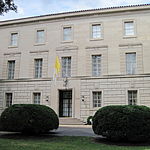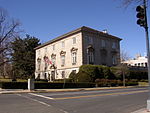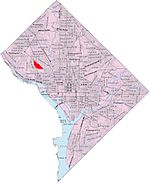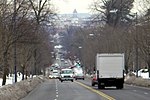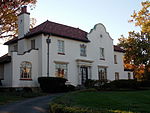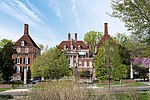Number One Observatory Circle
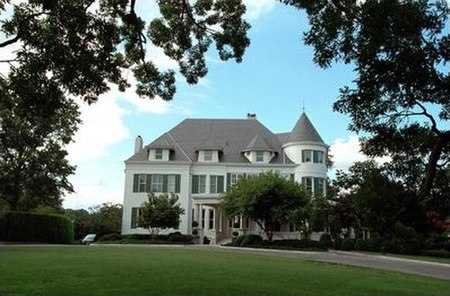
Number One Observatory Circle is the official residence of the vice president of the United States. Located on the northeast grounds of the U.S. Naval Observatory in Washington, D.C., the house was built in 1893 for the observatory superintendent. The chief of naval operations (CNO) liked the house so much that in 1923 he took over the house for himself. It remained the residence of the CNO until 1974, when Congress authorized its transformation to an official residence for the vice president, though a temporary one. It is still the "official temporary residence of the vice president of the United States" by law. The 1974 congressional authorization covered the cost of refurbishment and furnishing the house. Although Number One Observatory Circle was made available to the vice president in 1974, more than three years passed before a vice president lived full-time in the house. Vice President Gerald Ford became president before he could use the house. His vice president, Nelson Rockefeller, primarily used the home for entertainment as he already had a well-secured residence in Washington, D.C., though the Rockefellers donated millions of dollars' worth of furnishings to the house. Vice President Walter Mondale was the first vice president to move into the house. Every vice president since has lived there.The vice-presidential mansion was refurbished by the United States Navy in early 2001, slightly delaying the move of Vice President Dick Cheney and his family. Similarly, Vice President Kamala Harris delayed moving in until April 2021 while renovations occurred.
Excerpt from the Wikipedia article Number One Observatory Circle (License: CC BY-SA 3.0, Authors, Images).Number One Observatory Circle
Observatory Circle Northwest, Washington
Geographical coordinates (GPS) Address Website External links Nearby Places Show on map
Geographical coordinates (GPS)
| Latitude | Longitude |
|---|---|
| N 38.9229553 ° | E -77.0654258 ° |
Address
Number One Observatory Circle
Observatory Circle Northwest 1
20007 Washington
District of Columbia, United States
Open on Google Maps

